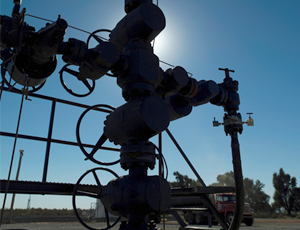
Industry sources say they are generally supportive of the recommendations of the Dept. of Energy’s Subcommittee on Shale Gas Production released on August 11. But environmental groups say the report lacks substance, and some are calling for a moratorium until safety and environmental concerns can be addressed.
The DOE advisory panel, established at the request of President Obama this spring, in large part endorses shale gas as an important part of the nation’s energy portfolio as well as the method used to extract the gas, hydraulic fracturing, or “hydrofracking.”
“We see a very positive message for shale gas development,” says Erik Mileto, director of upstream and industry operations for the American Petroleum Institute. He says the enormous growth of the shale gas production market has shown to create jobs and benefit the economy. “We’re glad to see that this is all recognized” by the panel, he says.
In its draft recommendations, the panel called for industry leadership in improving environmental performance, underpinned by strong regulations and rigorous enforcement of those regulations. But the subcommittee stopped short of specifying what those regulations should be or which agencies should oversee their enforcement.
Key recommendations of the report include systematic measurement of methane and other air emissions during shale gas production to improve air quality and taking immediate steps to reduce those emissions using proven technologies and practices.
Additionally, the panel called on shale gas production companies as well as the agencies that regulate them to make information about shale gas production operations more accessible to the public through a new national database.
“As shale gas grows and becomes an increasingly important part of our nation’s energy supply, it is crucial to bring a better understanding of the environmental impacts—both current and potential—and ensure that they are properly addressed,” Subcommittee Chairman John Deutch says. “The current output of shale gas and its potential for future growth emphasize the need to assure that this supply is produced in an environmentally sound fashion, and in a way that meets the needs of public trust.”
Mileto says industry has already taken voluntary steps to develop best practices to ensure that shale gas is extracted and produced safely to minimize the impact on the environment. For example, API has developed a standard of best practices to ensure that methane does not migrate into water sources during well construction, a standard that many energy companies are adopting voluntarily. Moreover, the industry has voluntarily moved toward recycling a larger quantity of the “frack” wastewater. More than 70% of the water used during hydraulic fracturing is recycled, he says. “Industry stands committed to continuous improvement.”
Matthew DeMarco, principal of Advanced GeoServices Corp., West Chester, Pa., an environmental engineering firm that works in the Marcellus Shale region, notes that the panel’s recommendations, if implemented, should create opportunities for firms not only in the oil and gas sector, but for traditional environmental engineering firms as well. For example, the panel’s recommendation that air emissions be monitored and measured could provide work for firms that work on air quality projects, he says.
But some critics say the DOE report ducks the central question of whether hydraulic fracturing should remain exempt from most federal environmental regulations, such as the Safe Drinking Water Act and the Clean Water Act. Such environmental laws “are riddled with exemptions for the oil and gas industry,” says John Rumpler, senior attorney for Environment America.
Rumpler says that although the panel’s recommendations are a good “first step,” they do not go far enough to address the safety and environmental concerns raised by the public. For example, “merely disclosing the chemicals used [during fracking] doesn’t stop the chemicals from getting into the water,” he says.
At a minimum, the administration should ensure that the nation’s major environmental laws apply to hydraulic fracturing; and that forests, parks and areas that supply drinking water should remain permanently off-limits to fracking operations, he says.
Environment America and other groups have called for a moratorium on hydrofracking until the industry takes the steps necessary to adequately prove to the public that the practice is safe. "The onus is on industry," he says.
Officials from the Environmental Working Group say that the subcommittee seems to be sending a message to communities in states where shale gas is plentiful, such as Pennsylvania, West Virginia and Colorado, that the administration is more concerned about maintaining the growth of the industry than it is in addressing the environmental problems communities are facing as a result of shale gas production.
EWG, a consumer and environmental advocacy group based in Washington, D.C., published a report on Aug. 3 highlighting a case of well-water contamination as a result of hydraulic fracturing in West Virginia. Industry has long claimed that no instances of groundwater contamination from hydraulic fracturing have been identified.
Advanced GeoServices’ DeMarco notes that it was not necessarily the DOE’s mission to establish a regulatory framework for shale gas production in the preliminary, 90-day report. That will likely fall to the Environmental Protection Agency, which is working on a study of its own.
In the meantime, the industry will continue to move forward in developing better, safer methods, and states will continue to strictly enforce their own regulations, says API’s Mileto. DeMarco concurs. “We don’t want to smother the industry right now while best practices are still being developed,” he says.
The DOE panel will release a final report in November.



Post a comment to this article
Report Abusive Comment